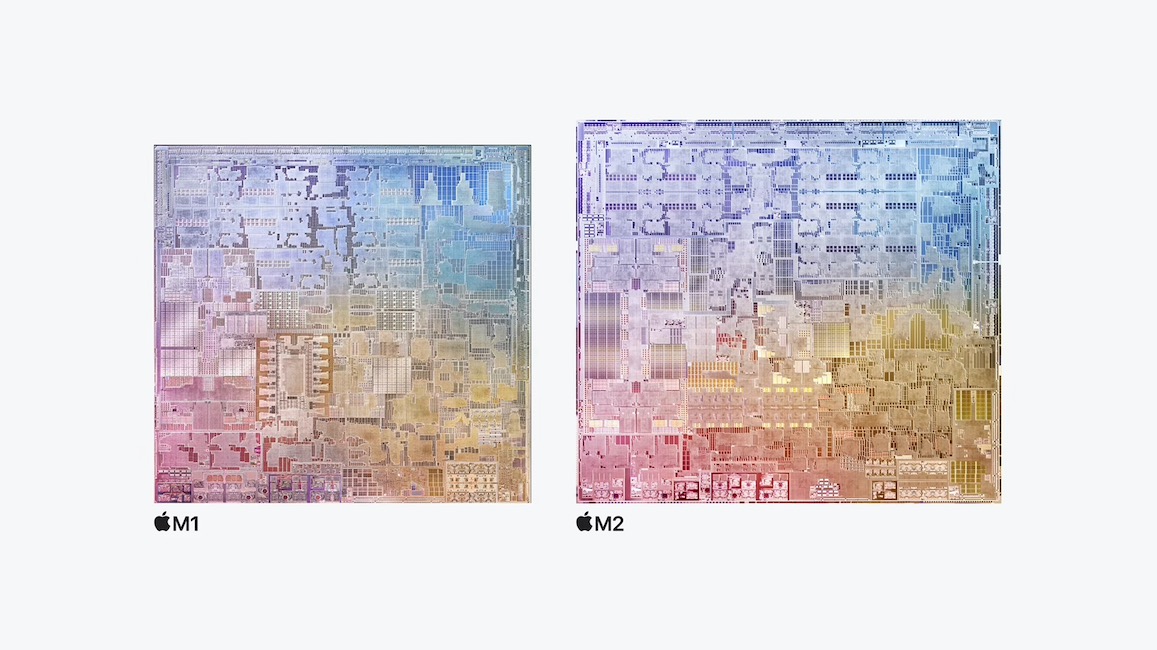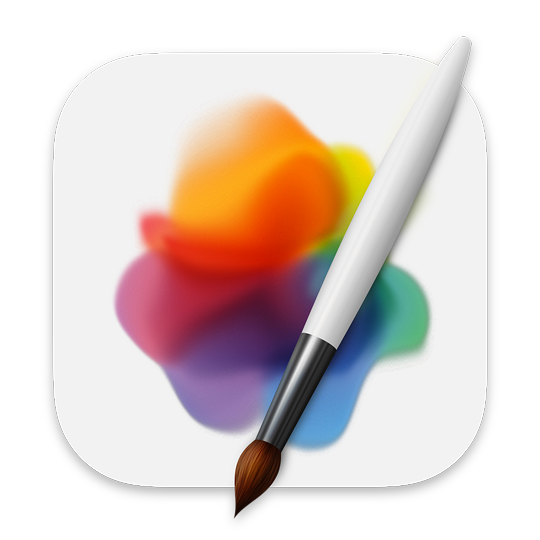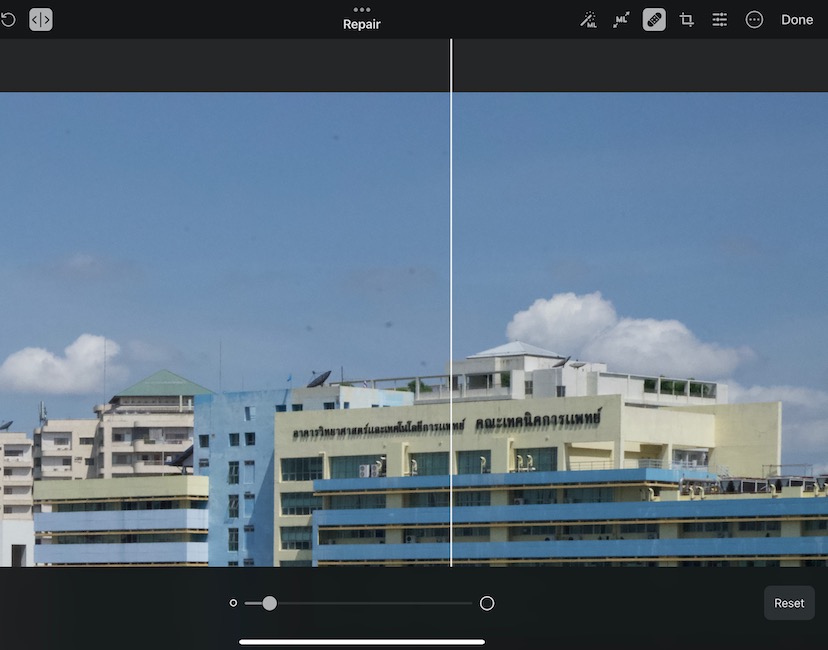|
|
Tuesday Notes: Updates and Rumors; Pixelmator Pro 3.0; AI, Photography and Art; Accessibility and RealityBy Graham K. Rogers
New and UpcomingLate last week there were a couple of updates to iOS and iPadOS. We had been told that a camera issue affecting some iPhone 14 models and a problem with a repeating permissions panel, were to be fixed this week, but on Friday morning there was the 16.0.2 update for the iPhone and an even more unexpected 15.4.7 iPadOS update. The updates for the iPads and older model iPhones also had some bug fixes and security updates, so were recommended for all users.While we are expecting a number of new product announcements from Apple, Mark Gurman suggests in his weekly newsletter that instead of a major video production as we saw for the iPhone this month, Apple may simply announce the new products using press releases. There's no fun there. Online, several accept this possibility, with some arguing that the updates will be unsubstantial, apart from the inclusion of the M2 chip. Others think there will be more substance to the updates and are still expecting a full on announcement (Roman Loyola, MacWorld). By Tuesday morning the announcement by press release was the new reality.

Moving up to the M2 chips - Image courtesy of Apple
Pixelmator Pro Update to 3.0 and AI I saw this week that Pixelmator Pro for the Mac was updated to version 3.0, priced at $39.99 for new users, with a free download for those who had already made the purchase. I bought it when it first came out - I already had Pixelmator - and it is often compared to Affinity Photo. There are also iPad equivalents. On the iPad and iPhone there is Pixelmator and Pixelmator Photo (not Pixelmator Pro), while Affinity Photo has an iPad app. Pixelmator Photo is expected to come to the Mac some time this year.
I saw this week that Pixelmator Pro for the Mac was updated to version 3.0, priced at $39.99 for new users, with a free download for those who had already made the purchase. I bought it when it first came out - I already had Pixelmator - and it is often compared to Affinity Photo. There are also iPad equivalents. On the iPad and iPhone there is Pixelmator and Pixelmator Photo (not Pixelmator Pro), while Affinity Photo has an iPad app. Pixelmator Photo is expected to come to the Mac some time this year.
Both Pixelmator Pro and Affinity Photo have been compared to Adobe Photoshop: good alternatives, particularly if you do not want to jump through Adobe's hoops. When Flash was around (for the Mac at least) it used to be one of the least easy update processes - and it was updated frequently with the bugs and insecurities found - starting with the login to the Adobe site and then trying to figure out the right link. I also find the idea of subscriptions unpalatable. Several reports noted the update release to Pixelmator Pro and there were some useful comments. One I pulled out for its obvious photography connections was from David Schloss (PetaPixel). He looks at the new features, including "artificial intelligence-based (AI) template editing," which gives "anyone the capability to create stunning visuals in moments". I thought it worthwhile clarifying how I think AI should (and should not) be used. For comments on the new version of Pixelmator Pro, see below.

Editing in Pixelmator Pro
As someone who enjoys taking photographs, every image is a learning experience and I want my pictures to be true representations of the subject as I saw it. That does not preclude me from using filters (film or DSLR), changing color to black and white, or using editing controls, some of which may enhance the image with AI. A good example is the Repair tool. Before digital manipulation, this would be an arduous and delicate task. Most links these days start with the idea of scanning and editing in software, which is my approach to film photography and this is a part of the process that I enjoy most: the image is revealed by the scan and improved by the software enhancement. The process of pre-digital image manipulation, as described by Jocelyn Sears (Mental Floss), would have been beyond my skills, or patience. Some of the images in this page do not load, but links to the sources, including Chapter XXI and several subsequent chapters of the Library of Practical Photography (and the other sources) are worth looking at, if only to realize how thankful we should be for electronics. This was for a glass plate negative. I cannot imagine how hard this might be on 120 film or 35mm. Sears does touch on the ethics of retouching so this is not a new problem. In teaching a class on ethics and morals I used images from the time of Stalin, such as the editing out (airbrushing) of Trotsky and Kamenev (and more). The question of AI also affects fine art. Michael Pearce (Mutual Art) writes critically and at length about the arrival of AI: "What human creativity remains in the process has moved to the realm of language and curation. Anyone with a decent vocabulary can prompt hundreds of images a day, select the best, and take the place of a digital concept artist who has years of training." There is a lengthy article, with video clips by Christopher Malcolm on FStoppers that also discusses concerns about this so I am not alone. When image editing software first arrived, it was common to see editors working at the pixel level to fix problems or enhance the image. AI has improved this no end. On the Mac, I use the Retouch tool in Apple Photos: for dust or other blemishes on negatives or for sensor dust that I currently have a problem with. This has improved considerably and will not just remove a spot but use the background or surrounding area to fill in the missing data. The repair is almost invisible in most case.

Limited tools and frustrations of editing in Apple Photos on iPad Pro

Spot repair in Pixelmator Pro on iPad Pro"

Templates in Pixelmator Pro 3.0

Creating a poster in Pixelmator Pro 3.0
Accessibility and RealityNot far from my office is a school that caters to deaf and blind students. The Ratchasuda Foundation has support from the Royal Family. While it seemed to be quiet for a while, there are always cars there and a building program is currently underway, perhaps held back with the COVID-19 situation. As well as guiding the young students with their own disabilities, they also train students to provide future assistance. I was invited to speak to a group of the students and some of the trainees assisted with sign language for the deaf students. It is so hard that these helpers switch every 15 minutes.I had more questions than information. It was mentioned to me that the signing language (which is different in Thailand to the USA version) is real communication. We may see it as hand-waving but the young deaf children learn this so well that they are able to "speak" to each other fast and accurately. The blind students have other problems including navigation and reading. Technology has made reading easier. In Pages and TextEdit, using the Format menu and selecting Font, a panel with All fonts appears and in there is Apple Braille. It is a little different on the iPad but there is an Apple Support document that explains the setup. Living as a deaf or blind person has risks. In a dormitory situation there are several potential problems and to minimize them, the Foundation had a policy of room sharing: a deaf student with a blind student. For example, in the case of a fire, when an alarm sounds the bind student would hear, but the deaf student would be able to guide both of them in adverse conditions. Alarms are important as this may be the only way at night that any of us become aware of danger. Kenya Smith (iPhoneLife) discusses another new iOS16 feature: creating your own sound recognition alarms, "helpful", she writes, "if you have medical devices or appliances that have unique electronic jingles". The way to set this up is in Accessibility > Sound Recognition, but you will have to read the article for details. As well as warnings for Cat and Dog, I rather like the one for Water Running: easy to forget that sometimes. However, the phone needs to download data first.
Graham K. Rogers teaches at the Faculty of Engineering, Mahidol University in Thailand. He wrote in the Bangkok Post, Database supplement on IT subjects. For the last seven years of Database he wrote a column on Apple and Macs. After 3 years writing a column in the Life supplement, he is now no longer associated with the Bangkok Post. He can be followed on Twitter (@extensions_th) |
|


